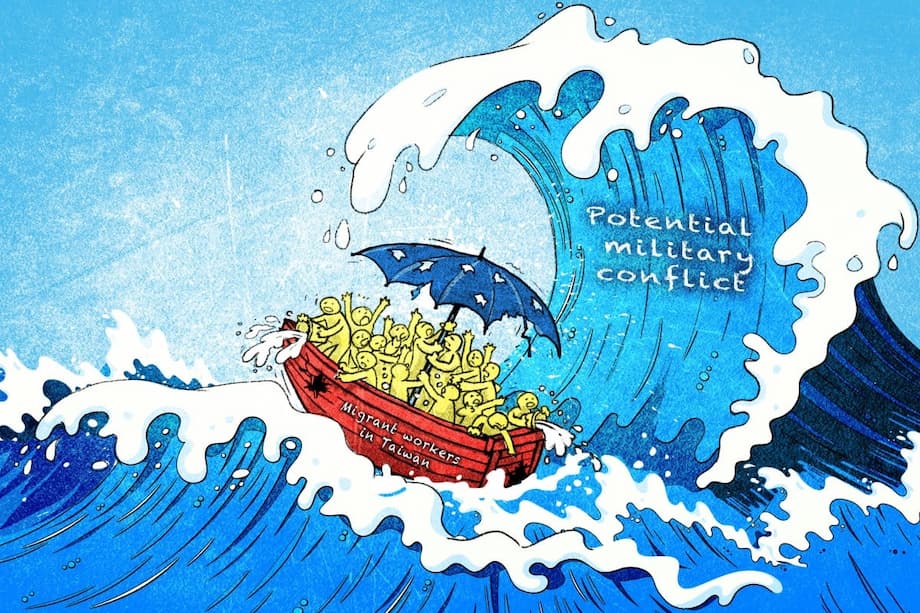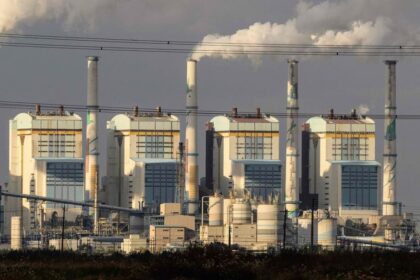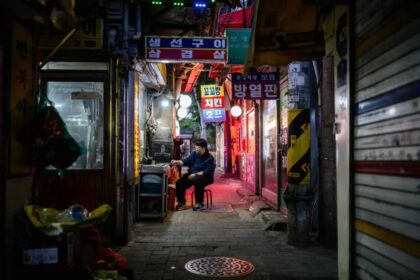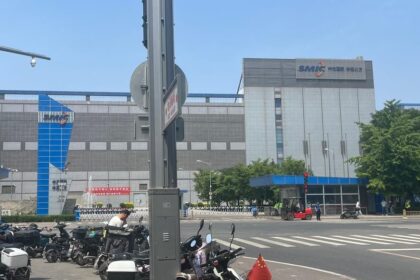Life and work in a flashpoint
Taiwan relies on a vast community of migrant workers who keep its economy running while living with a risk many residents try not to dwell on. They care for older adults, assemble electronics, pour concrete, and crew fishing boats. They also weigh every headline about rising tension across the Taiwan Strait against the promise of a steady paycheck that supports families back home. For many, that calculation is painful. A conflict could lock down ports and airports, strain emergency services, and leave noncitizens at the back of the line.
- Life and work in a flashpoint
- What a crisis could look like
- Rescue plans and the gap between promise and reality
- Indonesia, Vietnam, and Thailand, quiet stakeholders
- High risk sectors on shore and at sea
- Civil defense in Taiwan and the foreign resident gap
- Economic stakes across the region
- What migrant workers want
- Legal and diplomatic constraints
- What to Know
One of them is Gilda Banugan, a housekeeper from Davao City in the Philippines who has spent more than a decade in Taiwan so her children can finish school. She has learned the language, built trust with a local family, and saved money she could never earn at home. Yet every military drill is a reminder that she lives in a place where a crisis could occur with little warning.
Banugan described the choice many workers say they would make if a conflict started.
Gilda Banugan, a Filipino housekeeper in Taiwan: “If you ask many Filipino migrant workers, in case something happened are they going back to the Philippines or not, most likely the answer is no, they want to stay put in Taiwan. Because, how can we survive even if they tried to rescue us?”
Taiwan had 849,777 foreign workers at the end of July, according to the Ministry of Labor’s Workforce Development Agency. With spouses, children, and other dependents, the number of foreign residents surpasses 950,000, roughly 4 percent of the island’s population. Most come from Indonesia, the Philippines, Thailand, and Vietnam. They fill shortages in manufacturing, construction, fishing, hospitals, and home care. Many plan to work several years and send regular remittances to relatives.
Daily life is already hard for some. Guest workers often speak of second class treatment, crowded dormitories, heavy debts to recruiters, and unpaid overtime. For fishers and live in caregivers, the line between work and rest can blur. Those vulnerabilities would only deepen in a crisis, when official help becomes scarce and language barriers slow response.
What a crisis could look like
Everything depends on how a crisis begins. The danger is not one size fits all. Evacuation options would shift if the first move were a blockade, a wave of missile strikes, or a calibrated show of force that stops short of open war. Time, transportation, and coordination would be decisive. So would the political will of governments in Taipei, Beijing, and across Southeast Asia.
Blockade scenario
A blockade would be the most difficult case for foreign residents. Commercial flights would be grounded. Container ships and ferries would halt. Taiwan has limited deep water ports and a small number of international airports. If the People’s Liberation Army parked ships and aircraft around the island without firing, leaving a gap between threat and open combat, foreign governments would have few legal levers to force a corridor. Evacuation by sea would be risky, slow, and dependent on a deal with Beijing. Overland dispersal inside Taiwan might reduce crowding near major ports and airports, but it would not move people off the island.
Air and missile campaign
In a scenario of rapid missile strikes or cyber attacks that hit runways, radar, and power grids, civilian movement would become chaotic. Taiwan’s emergency services would prioritize citizens and critical infrastructure. Embassies are not present on the island due to the one China policy, so coordination would rely on representative offices and informal channels. Charter flights or military airlift might be feasible in small numbers if runways remain operational and if a temporary pause in hostilities can be negotiated. Without that pause, large scale air evacuation would be unlikely.
Limited use of force and gray zone pressure
China has practiced daily pressure short of war for years, sending aircraft and ships near Taiwan. A sharper version could involve tighter maritime checks, airspace warnings, and cyber pressure on communications and banking. That environment might still allow discrete departures by commercial flights and ferries if companies accept the risk. Early movers would have the best chance. Those who wait could find themselves stranded if the situation escalates.
Rescue plans and the gap between promise and reality
Sending countries say they are preparing. The Philippines, Indonesia, Vietnam, and Thailand have all discussed evacuation contingencies in recent years. Planning ranges from simple contact lists and safe houses to drills and prearranged charter options. The scale of the task is daunting. The Philippines alone counts close to two hundred thousand citizens in Taiwan. Indonesia has hundreds of thousands, many in domestic work and fishing. Moving even a fraction would require cooperation with Taiwan, China, the United States, Japan, and others, plus favorable weather and a clear window to move.
In Manila, leaders have begun to speak more openly about the stakes. The country’s top diplomat has said direct talks with Beijing on the safety of Filipinos in Taiwan are on the table, a significant step in a politically sensitive space.
Theresa Lazaro, Philippine foreign affairs secretary, on the prospect of discussing evacuation with Beijing: “Such discussions were timely.”
President Ferdinand Marcos Jr. has also framed the danger bluntly, citing geography and the need to protect citizens in Taiwan as reasons the Philippines could not stand apart if fighting began. He has insisted Manila is not seeking war but is strengthening defense partnerships and preparing for humanitarian operations in the north.
President Ferdinand Marcos Jr., on national defense and territorial integrity: “The Philippines will not cede any territory.”
Regional analysts believe China might try to keep Southeast Asian countries neutral in a Taiwan crisis. One way would be to propose humanitarian corridors or to help evacuate foreign nationals. That aid would be politically complicated. Some governments would hesitate to accept assistance from Chinese forces, yet practical needs could outweigh that hesitation if lives are at risk. Either way, the clock would be the enemy. If a blockade is tight or if runways are cratered, rescue plans on paper could quickly collide with reality.
Indonesia, Vietnam, and Thailand, quiet stakeholders
Indonesia is deeply invested in calm. Its trade with China far exceeds its trade with Taiwan, and Chinese companies fund high profile projects across the archipelago. Jakarta’s public stance tends to stress neutrality and dialogue. That position reflects economic gravity, yet it also masks a human reality. Hundreds of thousands of Indonesian citizens work in Taiwan, many as caregivers, factory workers, or fishers, and their safety would be a first order concern if a crisis erupts. The government has outlined contingency measures in the past, but geography and logistics would still make evacuation a high risk operation.
Vietnam and Thailand also have sizable worker communities in Taiwan. Many labor in factories, construction, and home care. Their governments would likely press for humanitarian corridors and use every available channel to advise citizens, but they face the same barriers as the Philippines and Indonesia. Without secure routes, even well crafted plans cannot guarantee movement.
High risk sectors on shore and at sea
Not all workers face the same hazards. Crews on Taiwan linked deep sea vessels often spend months away from home, moving through contested waters where no country has clear authority. Reports of unpaid wages, debt bondage, and violent treatment in parts of the distant water fleet have prompted outside scrutiny in recent years. Even in calm times, fishers can be hard to reach when they need help. In a crisis, ships at sea could find themselves caught between orders from owners, risk of interception, and a lack of safe harbors.
On land, caregivers and factory workers have different vulnerabilities. Many live in employer provided dormitories and rely on labor brokers for paperwork and problem solving. If power goes out or transit shuts, getting to a safe meeting point becomes difficult. Language can slow response. Some local governments have developed multilingual notices for disasters such as typhoons, but conflict brings separate complications, from shelter capacity to food supply. Workers who lack clear instructions from employers may have to make choices on their own.
- Fishers may be far from Taiwan when a crisis begins, with limited options to dock safely.
- Caregivers could be duty bound to stay with patients in private homes or hospitals.
- Factory workers who live in crowded dorms may struggle to move quickly if transport halts.
- Debt to recruiters can push workers to avoid leaving jobs, even when safety becomes a concern.
Civil defense in Taiwan and the foreign resident gap
Taiwan has expanded military readiness in recent years, including longer conscription and a broader focus on civil defense. City governments promote basic preparedness with drills and public guidance. Yet most of that messaging is designed with citizens in mind. Migrant workers often receive information late or not at all, and many do not read Chinese. The result is an information gap at the very moment when minutes matter.
Some resources do exist. The Ministry of Labor operates the 1955 hotline with multilingual support for foreign workers. Local authorities and community groups have posted guides in several Southeast Asian languages for earthquakes and typhoons. Employers are urged to keep updated contact lists, share evacuation routes, and make sure foreign staff know where to gather in an emergency. The next step is clarity about conflict specific plans, such as where shelters are, what to pack, and whether workers can expect transport. Clear instructions, in the languages people speak, would reduce panic and cut down on rumors.
Another challenge is psychological. Surveys in recent years suggest parts of Taiwan’s society feel less urgency about the risk of war than the headlines might imply. Frequent Chinese military activity without bloodshed can numb public attention. If citizens feel distant from danger, it becomes harder to sustain the budget, training, and planning needed for civil defense that includes everyone who lives on the island, not just passport holders.
Economic stakes across the region
Foreign workers are woven into Taiwan’s growth story. The island is a hub for advanced manufacturing, led by semiconductor firms that supply chips used in phones, autos, and industrial machines around the world. Caregivers and hospital aides help Taiwan manage an aging society, freeing more citizens to join the workforce. Construction and factory labor fill shortages in a tight job market. Disruptions would ripple beyond Taiwan’s borders. Countries that rely on Taiwanese chips would face shortages. Factories in Southeast Asia that assemble phones and appliances could slow or halt lines if parts stop arriving. Prices might rise for consumers far beyond Asia.
Sending countries would also feel the shock. Remittances from Taiwan help pay school fees, housing, and daily expenses in parts of Indonesia, the Philippines, Thailand, and Vietnam. If work stops or workers leave early, families back home would lose income. Governments would have to weigh support at home against the cost and risk of evacuation. The longer a crisis drags on, the greater the strain on budgets and social safety nets.
What migrant workers want
Economic reality still drives the decisions. Many workers say they would stay in Taiwan even if a crisis breaks. The logic is stark. Leaving early means losing a job and income. Waiting could bring risk, but it also preserves the ability to keep sending money home for as long as transport and employers operate. That trade off is not made lightly. The fear of being stranded weighs on people who have already made sacrifices to work abroad.
Workers who plan to stay often describe simple steps that give them more control. They keep their passports on hand, carry a small bag with key items, save a list of emergency contacts, and agree on meeting points with friends. They ask supervisors for the company plan and talk with brokers about what will happen if phones and messages go down. None of this answers the largest problem, the lack of guaranteed routes off the island in a crisis, but it can reduce confusion if the worst happens.
Legal and diplomatic constraints
The legal context complicates everything. Most countries follow a one China policy, which means they do not maintain embassies in Taipei. Instead, they run representative offices that handle visas and trade. Those offices can coordinate with Taiwan’s authorities and with employers, but they lack the tools embassies bring in a war zone. If an evacuation must cross waters patrolled by Chinese forces, any move would require quiet talks that are hard to arrange once fighting begins.
Even in peace, consular support for workers depends on cooperation with Taiwan’s ministries, labor brokers, and employers. In conflict, representative offices would need to issue alerts across many languages, move staff to safe locations, and manage crowds at collection points. Countries closest to Taiwan, such as the Philippines and Japan, could play a role as staging areas for evacuees if corridors open. That would require fast decisions in Manila, Tokyo, and Taipei, and assurances from Beijing that civilians would not be targeted.
What to Know
- Nearly 850,000 foreign workers, plus dependents, live in Taiwan, mostly from Indonesia, the Philippines, Thailand, and Vietnam.
- Many migrants say they would stay if a crisis begins, fearing they could not reach home safely once ports and airports close.
- Blockade conditions would make evacuation extremely difficult, since commercial flights and ferries would stop.
- The Philippines has discussed safety and evacuation with China and says contingency plans exist for Filipinos in Taiwan.
- China could seek to keep Southeast Asia neutral by proposing humanitarian evacuation corridors, a politically sensitive proposition.
- High risk groups include deep sea fishers, live in caregivers, and factory workers in large dormitories.
- Taiwan’s civil defense has expanded, but foreign residents still face an information gap, especially in languages and clear instructions.
- Disruption in Taiwan would hit global supply chains and remittances, affecting Southeast Asian economies and families.
- Without embassies in Taipei, sending countries would rely on representative offices and informal channels in any evacuation.
- Clear, multilingual preparedness guidance for migrant workers would reduce confusion and help save lives if a crisis unfolds.












